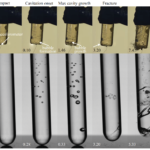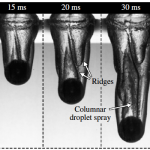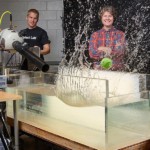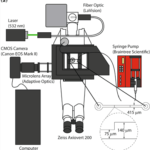Abstract:
The water-entry of ballistic projectiles is investigated using high-speed digital imaging to capture the subsurface cavity dynamics. Specially designed 0.22 caliber projectiles are fired into water at shallow angles to the free surface (5º to 15º) at Mach numbers between 0.3 and 1.0. Redesigned projectile tip geometries allowed projectiles to successfully enter the water and travel large distances underwater, due to the subsurface vapor-cavity that forms after impact, dramatically decreasing drag on the projectile. Projectile dynamics, critical entry angle and cavity formation are discussed for various bullet geometries, and results show that successful water-entry is a function of tip shape and length-to-diameter ratio. The data conclusively show that bullets with lower length-to-diameter ratios tumble inside the vapor cavity, while higher length-to-diameter ratios can lean against the cavity walls inducing a planing force pushing them back inside the cavity and mitigating the tumbling behavior. Experimental cavity observations of vapor-cavity formation is compared to a modified version of Logvinovich’s [1] theoretical model, which includes an updated formulation of the model and an angle of attack correction. Despite the unsteady nature of this problem, this improved steady state model fits well with experimental data and serves as an accurate design tool for naval engineers.
Citation and Link:






Recent Comments